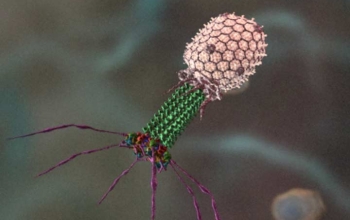FORMULATION OF BIOINOCULANTS
Biofertilizers
can be applied to the crops by different formulations like (1) Carrier-based
inoculant, (2) Liquid-based inoculant and (3) Alginate bead based inoculant.
1) CARRIER BASED INOCULANT
·
Carrier is defined as the medium in which microorganisms allowed
to multiply.
·
Various types of material are used as Carrier for Seed or Soil inoculation.
·
For preparation of Seed inoculant, the Carrier material is milled
to fine powder with particle size of 10 - 40 μm.
·
Peat is the most frequently used Carrier material for Seed
inoculation.
·
For soil inoculation, Carrier material with granular form (0.5 –
1.5 mm) is generally used. Granular forms of Peat, Perlite, Charcoal, Talcum
powder or Soil aggregates are suitable for soil inoculation.
Carrier materials used for Biofertilizers
a) Celite
b) Cellulose
powder
c) Charcoal
d) Cheese whey
e) Coal
f) Coconut
shell
g) Compost/Vermicompost
material
h) Diatom
i) Kaolin
j) Leaf manure
k) Lignite
l) Mineral
soils/ Soil aggregates
m) Oxalic acid
n) Peat
o) Perlite
p) Porosil
q) Pressmud
r) Rice husk
s) Sugarcane
bagasse
t) Talcum
powder
u) Vermiculite
v) Wastewater
sludge
w) Wheat bran
Characteristics
of good Carrier material
a)
Non – toxic to Inoculant microbial stain and Plants.
b)
Good moisture adsorption capacity.
c)
Easy to sterilize by Autoclaving or Gamma – irradiation.
d)
Easy access for mixing with Bioinoculants.
e)
Available in adequate amounts.
f)
Low cost.
g)
Good adhesion to seeds.
h) Good pH
buffering capacity.
i) Organic
matter content should be around 40 %.
j) Water
holding capacity should be more than 50 %.
Preparation
of Carrier materials for Seed or Soil inoculation
a) Drying and Grinding of the Carriers
·
Sundry upto 5 %.
·
Grind and pass through 100 – 200 µ Sieve.
·
Survival of microorganisms is poor in Coarse material.
b) Pre-treatment of the Carriers
·
Mix with Calcium carbonate (CaCO3) powder, neutralize
and pH is adjusted to 6.5 to 7.0.
·
The amount of CaCO3 can be added according to the
Acidity of the Carrier material.
c) Sterilization of the
Carrier materials
·
Sterilization of Carrier material is essential to keep high number
of inoculant bacteria on carrier for long storage period.
·
Gamma-irradiation is the most suitable way of Carrier
sterilization, because the sterilization process makes almost no change in
physical and chemical properties of the material. Carrier material is packed in
thin-walled polyethylene bag, and then gamma-irradiated at 50 kGy (Kilogray).
·
Another way of carrier sterilization is Autoclaving. Carrier
material is packed in partially opened, thin-walled polypropylene bags and
autoclaved for 60 min at 121 °C. It should be noted that during autoclaving,
some materials changes their properties and produce toxic substance to some
bacterial strains.
d) Inoculation of microorganisms to the
Carrier materials
·
Prepare starter culture for inoculation. Optionally, appropriately
dilute with sterile water for moisture and cell number adjustment.
·
Inject the culture to the carrier package using a sterile
disposable plastic syringe with a needle.
·
Keep the package at appropriate temperatures for maturation and
storage. Although the temperatures suitable for maturation and storage are
dependent on the inoculant microorganisms, 30 °C for maturation and 20 °C - 30
°C for storage will be suited for inoculants in most cases.
Advantages of Carrier based Inoculants
a) Low cost
b) Easy to produce
c) Less
investment
Disadvantages of Carrier based Inoculants
a) Low Shelf –
life
b) Temperature
sensitive
c) Contamination
prone
d) Low cell
counts
e) Less
effective than Liquid based inoculants
2) LIQUID
BASED BIOINOCULANT
- Respective
Culture broth was prepared and mixed in combination with different
additives to increase the survival of Bioinoculants in a Liquid formulation.
- Wetter like Triton &
Tween with 0.5, 1.0 and 1.5 % concentration; Stickers like Carboxy methyl
cellulose (CMC) & Gum Arabic with 0.5, 1.0 and 1.5 %; Humectants – Glycerol, Trehalose
& Polyvinyl pyrollidone (PVP) with 0.5, 1.0 and 1.5 % were used
to increase the survival of microbial inoculants.
- One ml
of log phase culture of Bioinoculant was inoculated as single
inoculant in respective broth and the flasks were incubated at room
temperature.
- The formulation was analyzed for viable cell population at 1
month interval upto 12 months.
Advantages of Liquid based Inoculants
a) Longer Shelf
– life (12 to 24 months)
b) No
contamination
c) No loss of
properties due to storage upto 45 °C
d) Product can
be 100 % sterile
e) Better
survival population on Seed and Soil
f) More
effective than Carrier based inoculants
g) Very easy to
produce
h) Very easy to
use by farmers
i) Temperature
tolerant
j) High export
potential
k) High
commercial revenues
Disadvantages of Liquid based Inoculants
a) High cost
b) High
investment for production unit
3)
ALGINATE BEAD BASED BIOINOCULANT
- The microbial inoculants were grown
in respective Culture broth.
- Two
grams of Sodium alginate
was added to 100 ml of Culture broth of Microbial inoculants and it was mixed for 30 mins in a
Magnetic stirrer.
- The mixture was added drop wise
through a 10 ml syringe into 100 ml sterile 0.1N CaCl2 to obtain uniform Alginate beads.
- One
gram of material contained
16 to 17 beads, each bead approximately weighing 60 mg.
- The
beads were washed twice in sterile distilled water and incubated in respective broth containing microbial inoculants for seven days in an incubator at room
temperature to allow microbial
inoculants to multiply inside the beads.
- The beads were again
washed in sterile distilled water and air dried in Laminar air flow chamber under aseptic
condition. The alginate beads were then stored in Polythene bags at room temperature upto 6 months.
:max_bytes(150000):strip_icc():format(webp)/portrait-of-louis-pasteur-in-his-laboratory-517443464-5c897947c9e77c00010c2303.jpg)





